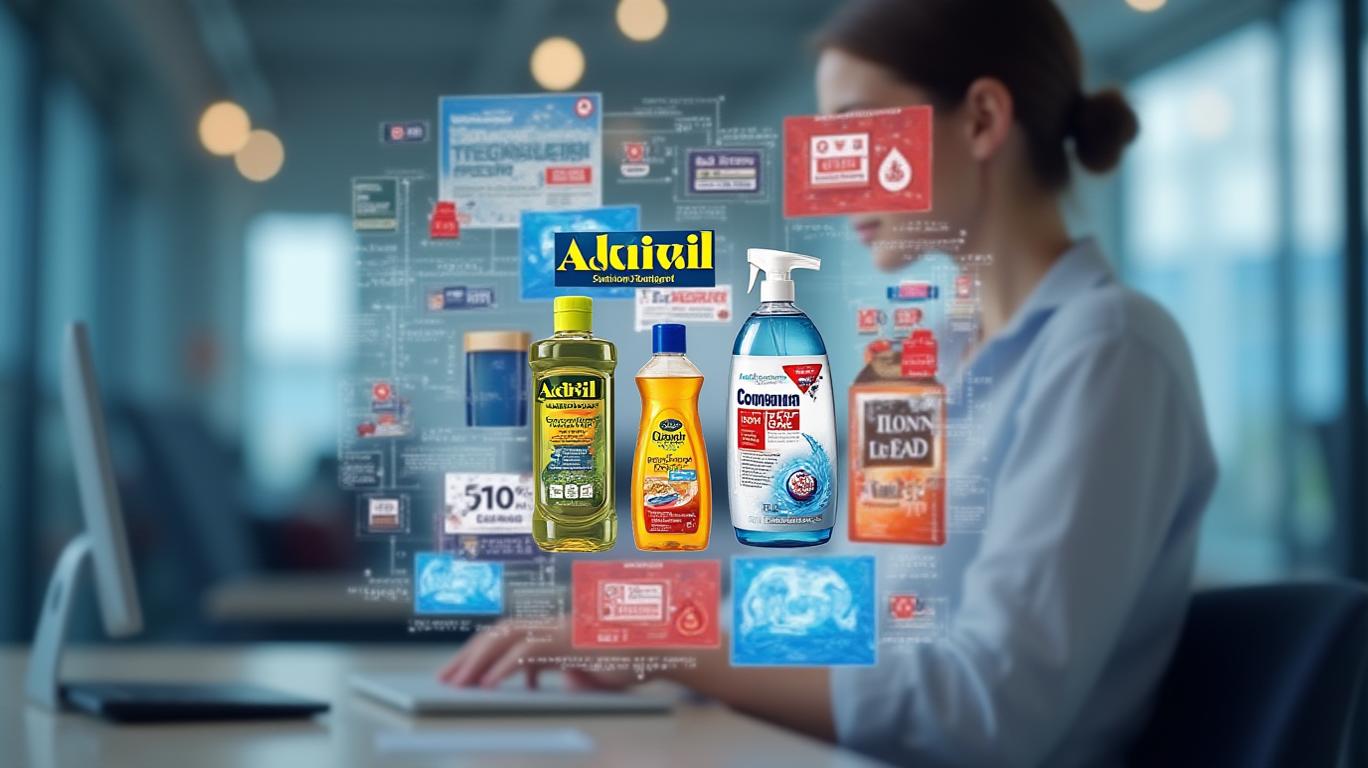Kenvue's Q1 Results Signal Challenges Ahead, But Long-Term Value Remains Intact
Kenvue, the consumer healthcare and beauty giant spun off from Pfizer in 2023, has delivered a mixed set of results for its first quarter of 2025. While the company’s net sales declined and adjusted earnings per share (EPS) fell, management emphasized progress in operational efficiency, strategic milestones, and a roadmap to navigate near-term headwinds. The question for investors is whether Kenvue’s long-term potential outweighs its current struggles.
The numbers tell a story of short-term turbulence. Total net sales dropped 3.9% to $3.74 billion year-over-year, driven by unfavorable foreign exchange rates, volume declines, and strategic price cuts.  . Adjusted EPS fell to $0.24, down from $0.28 a year ago, as margin pressures from tariffs, supply chain costs, and forex headwinds took their toll. Yet, the reported gross profit margin expanded to 58.0%, reflecting lower separation-related costs and operational improvements.
. Adjusted EPS fell to $0.24, down from $0.28 a year ago, as margin pressures from tariffs, supply chain costs, and forex headwinds took their toll. Yet, the reported gross profit margin expanded to 58.0%, reflecting lower separation-related costs and operational improvements.
The Operational Silver Linings
Despite the sales slump, kenvue achieved critical milestones. It exited all Transition Services Agreements (TSAs) with Pfizer by April 2025, a major post-separation step that reduces reliance on its former parent. The "Our Vue Forward" initiative, aimed at cutting costs and improving supply chain efficiency, delivered savings that partially offset margin pressures. Management also emphasized reinvestment in brand-building, which could pay dividends in the future.
Segment Performance: Strengths and Weaknesses
The company’s three segments revealed uneven results. The Self Care division, anchored by brands like Advil and Zyrtec, saw sales dip 1.8%, while its Adjusted Operating Income fell 5.6%. The Skin Health and Beauty segment, however, suffered a sharper decline, with sales dropping 7.3% and operating income plummeting 36%. This segment’s struggles, particularly in Olay and Coppertone, raise concerns about competitive pressures and shifting consumer preferences.
The Essential Health division, which includes products like Listerine, saw a 3.9% sales decline, though its Adjusted Operating Income held up better than peers. Geographically, Kenvue’s challenges were most acute in Latin America (-12.3% sales) and Asia Pacific (-8.7%), regions where forex pressures and inflation may have damped demand.
The Outlook: Navigating Tariffs and Forex
Kenvue’s full-year guidance hints at cautious optimism. The company expects net sales to grow 1-3% organically, with forex headwinds shaving off ~1%. Adjusted operating margins, however, are anticipated to decline due to rising tariffs—specifically, a $60 million annual impact from U.S.-China trade restrictions. Management aims to mitigate this through supply chain adjustments, but the path to profitability remains bumpy.
Ask Aime: "Is Kenvue's first quarter slump a buying opportunity?"
Investors have already priced in these challenges. Kenvue’s shares are down ~15% year-to-date, underperforming the broader market. Yet, the company’s balance sheet remains robust, with $1.1 billion in cash and a net debt position of -$7.7 billion, reflecting its ability to manage financial obligations.
Risks and Rewards
The risks are clear: tariffs, forex volatility, and slowing demand in key regions could prolong the margin squeeze. Kenvue also faces intense competition in its categories, from generics in OTC drugs to beauty brands like L’Oréal and Estée Lauder. The leadership transition of its CFO, effective in May, adds a layer of uncertainty.
But Kenvue’s long-term value hinges on its scale, brand strength, and strategic agility. Its portfolio includes iconic products with global reach, and its cost-cutting initiatives—already yielding savings—position it to rebound when macroeconomic conditions stabilize. Management’s updated outlook, while conservative, assumes it can offset ~70% of tariff impacts through operational changes, a sign of confidence in its execution.
Conclusion: A Play for Patient Investors
Kenvue’s Q1 results underscore the near-term hurdles of a post-separation company navigating global headwinds. Yet, its operational progress, fortress balance sheet, and high-margin brands suggest resilience. The key question is whether management can deliver on its cost and growth initiatives while defending market share.
Consider this: Kenvue’s Adjusted EPS is expected to remain flat in 2025, but the 1-3% organic sales growth target reflects a path to recovery. Meanwhile, its 3.2% dividend yield offers a cushion for investors willing to wait out the storm. While the stock’s current valuation—trading at ~10x forward earnings—reflects skepticism, a stabilization in forex rates or tariff relief could unlock upside.
For long-term investors, Kenvue’s mix of defensive brands, disciplined cost management, and manageable debt positions it as a viable play in a sector that will always be in demand. The road ahead is bumpy, but the destination remains worth watching.
The company’s ability to generate ~$1.1 billion in free cash flow in 2024, despite headwinds, signals underlying health. If Kenvue can execute its strategy, the Q1 stumble may prove to be a temporary setback rather than a harbinger of decline.










